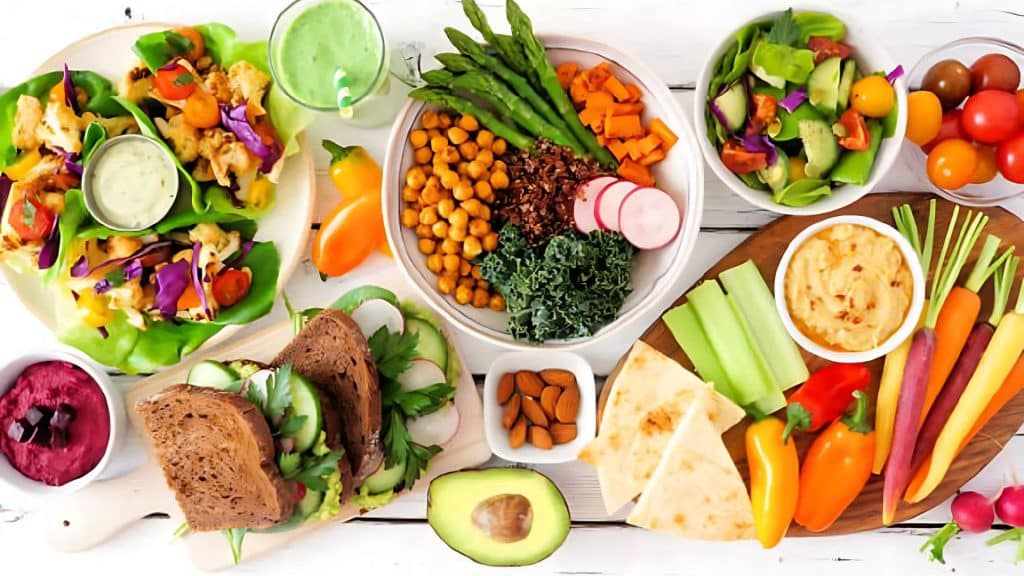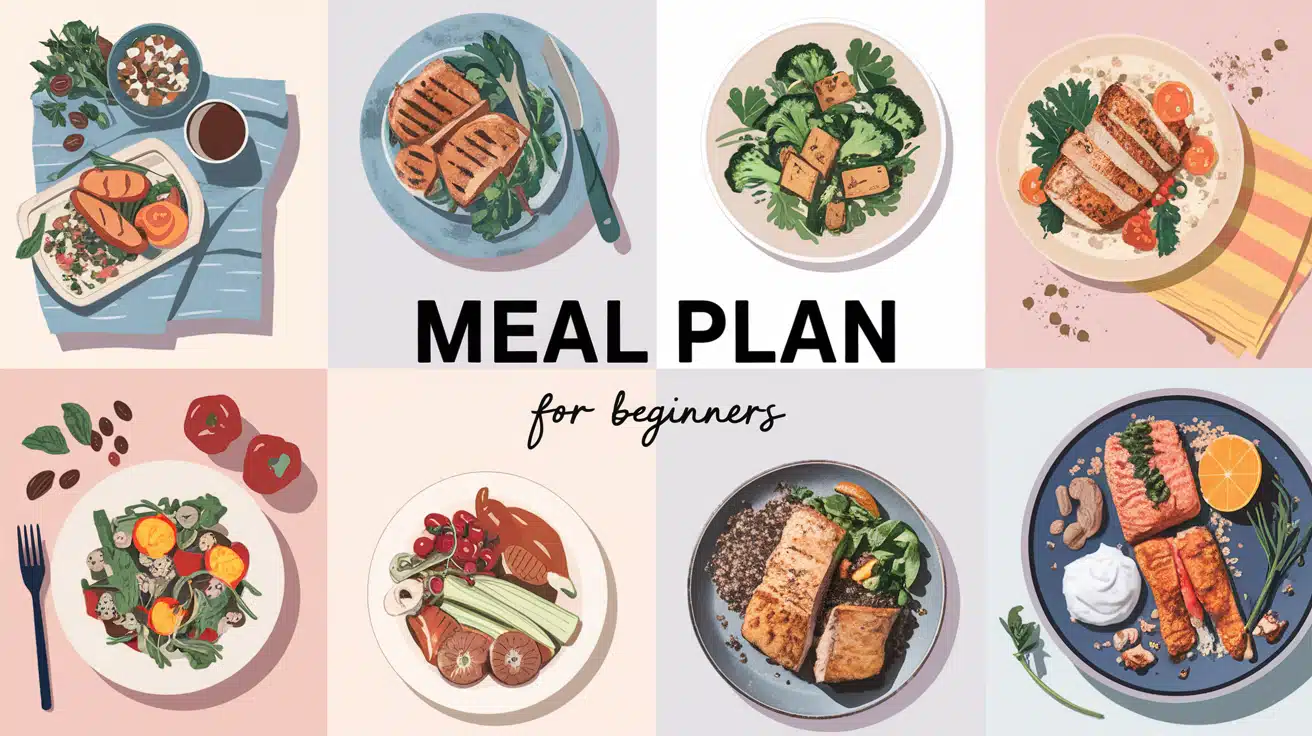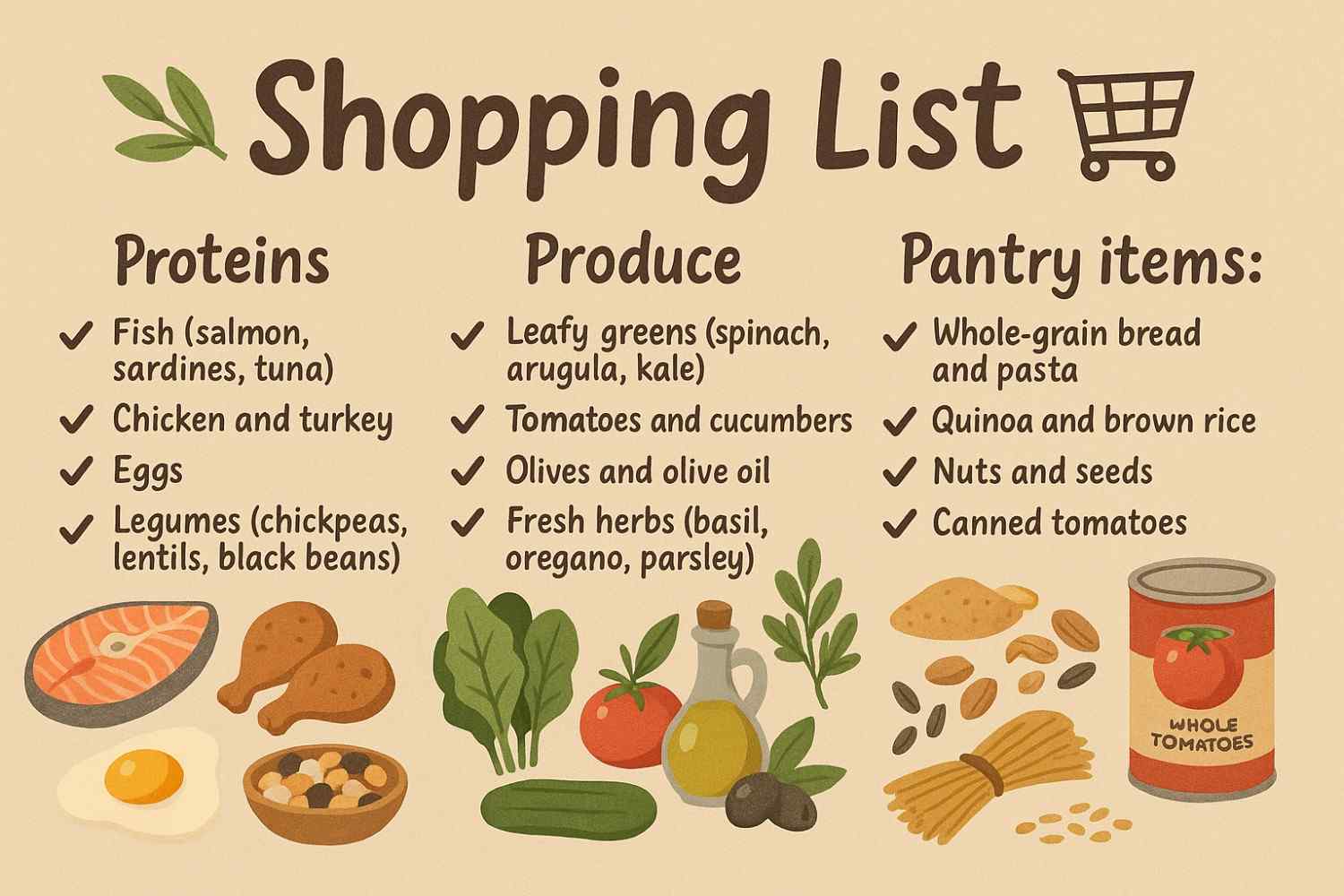Are you tired of staring into your fridge at 6 PM, wondering what to cook for dinner?
Do you find yourself ordering takeout more often than you’d like because healthy eating feels too complicated?
People struggle with maintaining nutritious eating habits in our busy world.
The good news is that meal planning for a healthy lifestyle doesn’t have to be overwhelming or time-consuming.
With the right approach, you can change your relationship with food, save money, and feel more energized every day.
In this blog, I’ll show you exactly how to create a sustainable meal planning system that works for your schedule, budget, and health goals.
What Is Meal Planning and Why Does It Matter?
Meal planning is the simple practice of deciding your meals ahead of time. It involves choosing recipes, creating shopping lists, and often preparing ingredients in advance.
Think of it as your roadmap to better health. When you plan meals, you’re less likely to reach for unhealthy convenience foods or skip meals altogether.
Key benefits include:
- Reduced food waste and grocery bills
- Better portion control and nutrition
- Less daily decision fatigue
- More family time around the dinner table
How to Meal Plan for Beginners?
Starting your meal planning journey doesn’t require fancy apps or complicated systems. Here’s a simple step-by-step approach with everything you need to know:
Step 1: Choose Your Planning Day
Pick one day each week to plan your meals in advance. Sunday works well for most people, but choose a day that fits your schedule.
Most successful meal planners stick to the same day every week. This creates a routine that becomes automatic. Sunday afternoon is popular because you can shop on Sunday evening or Monday morning. However, if you work weekends, Wednesday or Thursday might be better options.
Make it a ritual:
- Set aside 20-30 minutes of uninterrupted time
- Grab a cup of coffee or tea
- Have your calendar, cookbook, or phone ready
- Consider making this a family time where everyone contributes ideas
Pro tip: Set a recurring reminder on your phone to ensure you never forget your planning day.
Step 2: Start Small
Begin by planning just dinner for the week. Once this becomes a habit, add breakfast and lunch.
Dinner is usually the most stressful meal because you’re tired after work and need to feed the whole family. By solving this one meal, you’ll immediately reduce daily stress. Most people find success after 2-3 weeks of consistent dinner planning.
Why starting small works:
- Less overwhelming than planning every meal
- Builds confidence with early wins
- Creates sustainable habits
- Allows you to learn what works for your family
Don’t rush this process. Many people try to plan everything at once and give up within a week. Slow and steady wins the race.
Step 3: Take Inventory
Check your pantry, fridge, and freezer before planning your meals. Use what you already have to save money.
This step alone can save you $20 to $ 40 per week on groceries. You’ll be amazed at what you already have tucked away. Look for proteins in the freezer, canned goods in the pantry, and vegetables that need to be used soon.
Quick inventory method:
- Check expiration dates first
- Note the proteins you need to use this week
- Look for partial ingredients that can be combined
- Write down the spices and condiments you have
Smart storage reminder: Move older items to the front so you see them first. This simple trick can dramatically reduce food waste.
Step 4: Pick Simple Recipes
Select meals with 5-7 ingredients that can be prepared in 30 minutes or less.
Complex recipes with lengthy ingredient lists often result in expensive grocery bills and kitchen stress. Simple doesn’t mean boring. Some of the most delicious meals have just a few high-quality ingredients.
Beginner-friendly recipe sources:
- Pinterest boards with “30-minute meals”
- Family cookbooks with tested recipes
- Food blogs with simple weeknight dinners
- Apps like Yummly or AllRecipes with filtering options
Aim for 10-15 go-to recipes that your family loves. Once you have this collection, meal planning becomes much easier because you’re choosing from familiar options rather than searching for new ideas every week.
Recipe testing tip: Try one new recipe per week, at most. This keeps things interesting without overwhelming your schedule or budget.
Creating Your First 7-Day Healthy Meal Plan on a Budget
Eating healthy doesn’t have to break the bank. Many people think nutritious meals are expensive, but with smart planning, you can feed your family well for less than $100 per week.
The key is focusing on affordable, nutritious staples that provide maximum nutrition for your dollar.
| Day | Breakfast | Lunch | Dinner |
|---|---|---|---|
| Monday | Oatmeal with banana | Leftover soup | Chicken stir-fry |
| Tuesday | Greek yogurt with berries | Chicken salad wrap | Bean and rice bowl |
| Wednesday | Scrambled eggs with toast | Soup and salad | Pasta with vegetables |
| Thursday | Smoothie bowl | Bean and rice leftovers | Sheet pan salmon |
| Friday | Overnight oats | Pasta leftovers | Homemade pizza |
| Saturday | Pancakes | Sandwich and fruit | Slow cooker chili |
| Sunday | Yogurt parfait | Chili leftovers | Meal prep day |
Money-saving tips:
- Buy seasonal produce when it’s cheapest and most flavorful
- Use dried beans and lentils instead of canned (saves 50-70%)
- Choose cheaper protein cuts like chicken thighs, ground turkey, or fish on sale
- Shop sales and use store coupons, but only for items you actually need
Meal Planning for Families with Picky Eaters
Managing picky eaters requires patience and creativity. Try these family-friendly strategies:
The “Build Your Own” approach:
- Taco nights with various toppings
- Pizza with individual topping choices
- Salad bars with mix-and-match options
- Breakfast for dinner (pancakes, eggs, fruit)
Involve kids in the process:
- Let them choose one meal per week
- Take them grocery shopping
- Have them help with age-appropriate cooking tasks
- Try new foods together without pressure
Mediterranean Meal Plan Shopping List Essentials
The Mediterranean diet consistently ranks among the world’s healthiest eating patterns.
It’s based on the traditional foods eaten in countries like Greece, Italy, and Spain. Research suggests that this approach to eating can lower the risk of heart disease, promote brain health, and support weight management.
Mediterranean cooking celebrates seasonal eating. In summer, focus on tomatoes, cucumbers, and fresh herbs. Winter calls for heartier greens, such as kale, and root vegetables. Shopping seasonally keeps costs down and flavors at their peak.
Don’t try to buy everything at once. Start with olive oil, canned tomatoes, and whole grains. Add legumes and nuts next. Build your herb and spice collection gradually as you try new recipes.
Time-Saving Meal Prep Strategies
Meal prep doesn’t mean spending your entire Sunday in the kitchen. Try these efficient methods:
Batch cooking:
- Make large portions of grains and proteins
- Prepare soup and stew in slow cookers
- Cook double recipes and freeze half
Prep shortcuts:
- Wash and chop vegetables when you get home from shopping
- Use pre-cut vegetables when the budget allows
- Invest in quality storage containers
- Keep a running grocery list on your phone
Common Meal Planning Mistakes to Avoid
Learn from these typical beginner mistakes:
- Planning too many new recipes at once – Stick to a maximum of one new recipe per week to avoid overwhelming yourself and your budget.
- Not considering your actual schedule – Match your meal complexity to your energy levels – busy nights need simple 15-minute meals.
- Forgetting about leftovers – Plan for intentional leftovers by cooking double portions or repurposing yesterday’s dinner as today’s lunch.
- Shopping without a list – A grocery list prevents forgotten ingredients and reduces impulse purchases that blow your budget.
- Being too rigid with your plan – Build flexibility into your schedule by incorporating swap-friendly meals and allowing one “wild card” night per week.
Remember: Your meal plan should serve you, not stress you out. It’s okay to swap meals around or order pizza occasionally.
Conclusion
Meal planning for a healthy lifestyle is one of the best investments you can make in your well-being.
It saves time, money, and helps you feel more in control of your nutrition goals. Remember, the perfect meal plan is the one you’ll actually follow consistently.
Start small, be flexible, and focus on progress over perfection. Your future self will thank you for the energy, health benefits, and peace of mind that come with having nutritious meals ready when you need them.
What’s your biggest challenge with meal planning?
Have you tried any of these strategies before? Share your experiences in the comments below!







































